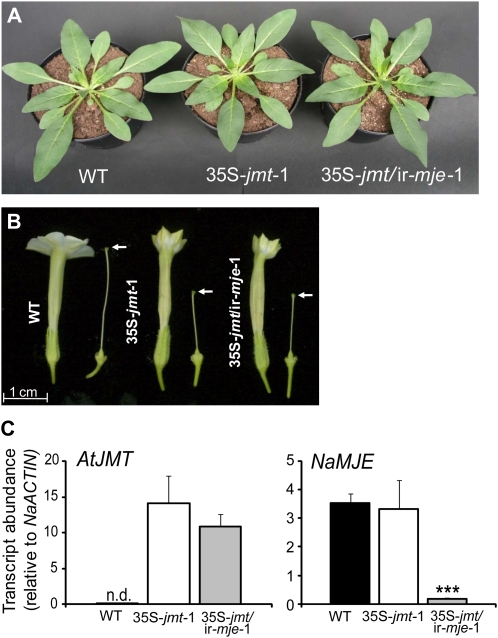Figure 1.
N. attenuata plants ectopically expressing AtJMT (35S-jmt) or additionally silenced for the expression of NaMJE (35S-jmt/ir-mje) are indistinguishable from wild type during rosette stage growth but produce flowers with altered morphology. A, N. attenuata plants ectopically expressing AtJMT (35S-jmt-1) and additionally silenced for NaMJE (35S-jmt/ir-mje-1) do not differ from wild-type plants during rosette stage (approximately 30-d-old). B, Flowers of 35S-jmt and 35S-jmt/ir-mje plants have short styles (white arrows indicate stigma position) and closed corollas compared to wild-type plants. C, Relative transcript abundance (mean ± sd, n = 5) of AtJMT and NaMJE in leaf laminas of wild-type, 35S-jmt, and 35S-jmt/ir-mje-1 plants 1 h after mechanical wounding and application of M. sexta oral secretions to the wounds (W + OS). No AtJMT expression was detected (n.d.) in wild-type tissues after W + OS elicitation. NaMJE relative transcript levels in 35S-jmt/ir-mje-1 leaf laminas after W + OS elicitation were reduced to approximately 5% of wild-type levels but were unchanged in 35S-jmt-1.

